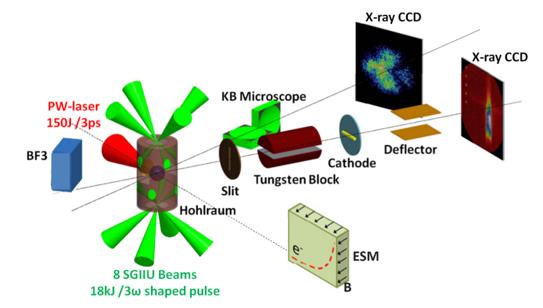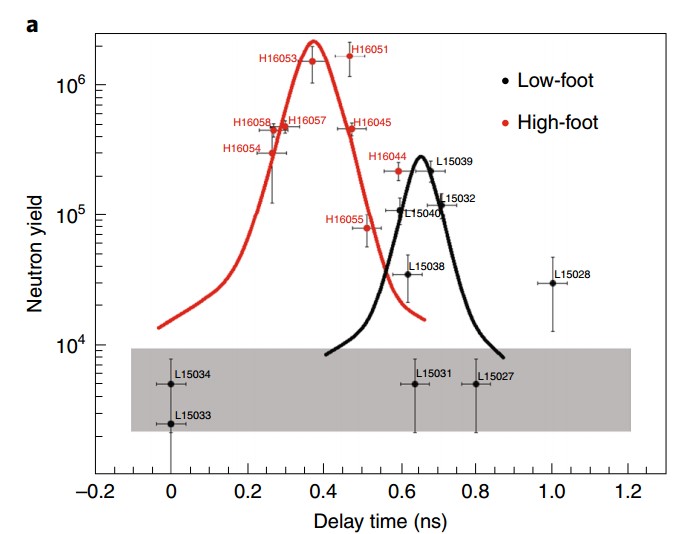Recently, a fast ignition research carried out on Shenguang Ⅱ Upgrade (SGⅡU) high power laser facility which was developed by the Shanghai Institute of Optics and Fine Mechanics (SIOM), Chinese Academy of Sciences, has made a major breakthrough on indirect-drive fast-ignition fusion. The result was published in Nature Physics.
As the first physical experiment platform in China to support fast ignition for laser inertial confinement fusion (ICF) research, SGⅡU started run-in in 2016 after nearly ten years of development. The device is composed of 8 beams of ten-thousand joule nanosecond (ns) laser and one-kilojoule picosecond laser (ps). The ns laser has the ability to precisely adjust the whole beam such as arbitrary pulse shaping and smooth focal spot. The ps beam’s focal spot could reach <25μm, with power density >10^19W/cm^2 and beam contrast >10^8, while the pulse is adjustable between 0.5~10ps.
With its excellent output performance such as high energy, high focus power density, high aiming accuracy, high synchronization accuracy, and ps beam combined with ns beams for shooting, SGⅡU can satisfy the complex physical experiment and widely serves laser nuclear fusion fast ignition, laboratory astrophysics, laser driven particle beams, nuclear medicine, plasma physics and other frontier researches, and has gained a series of important achievements.
In this new experiment, by using indirect laser driven fast ignition to obtain high level of implosion neutron production, the research team innovatively used indirect shooting method to pre-compress the target on the SG II U, which overcame many defects of the traditional fast ignition and the implosion neutron yield increased by 280 times, significantly improving the energy coupling efficiency of fast ignition.
This work was completed jointly by Laser Fusion Research Center of the Chinese Academy of Engineering, the Beijing Institute of Applied Physics and Computational Mathematics, the Graduate School of the Chinese Academy of Engineering, the National University of Defense Technology, Peking University, Shenzhen University of Technology, and SIOM.

Fig1. The experiment setup on SGⅡU. (Image by SIOM)
Fig2. The neutron yield obtained from SGⅡU. (Image by SIOM)
Article website:
https://doi.org/10.1038/s41567-020-0878-9
Contact:
Mr. CAO Yong
General Administrative Office
Shanghai Institute of Optics and Fine Mechanics, CAS
Email: caoyong@siom.ac.cn